GIF in PR Practices

GIF for the exhibition Mies van der Rohe + James Stirling: Circling the Square
March 8–June 25, 2017
at Royal Institute of British Architects
(1) Courtyard perspective and facade design studies of Number One Poultry. Courtesy of Laurence Bain. (2) Photomontage and photograph of 1:96 site model of Mansion House Square, courtesy of John Donat / RIBA Collections


Život umjetnosti 96: From Territory to Specific Site
Editor-in-chief: Sandra Križić Roban
Executive editor: Sanja Horvatinčić
Issue editor: Nikola Bojić
Editorial board: Marija Borovičkić, Liesbeth Decan, Leonida Kovač, Suzana Marjanić, Jelena Pašić, Irena Šimić, Vanja Žanko
Authors of texts: Aleksandar Bede, Mevre Bedir, Neil Brenner, Dubravka Đurić, Igor Ekštajn, Darko Fritz, Sanja Horvatinčić, Sonja Leboš, Ivica Mitrović, Marcus Owens, Miško Šuvaković, Felipe Vera
Authors of maps: Caitlin Berrigan, Ana Dana Beroš, Nikola Bojić, Damir Bralić, Branka Cvjetičanin, Damir Gamulin, Ida Križaj, Paolo Patelli, Sabine Réthoré, Tobias Revell, Antun Sevšek, Santiago Sierra, Artur Šilić, Idis Turato, Urban Theory Lab, Giuditta Vendrame
Co-worker: Nikola Gjurek
Design and layout: Billić Müller studio

Capitol Cinema (1938) with Capitol Summer Theatre (1915) is ruined site in the central Bucharest, damaged in the 1977 earthquake and due to forgetfulness. It has remarkable cultural potential and spatial characteristics, since it is located on a parcel between 36 Elisabeta Boulevard and 13 C-tin Mille Street. Recognising its social and educational potential to reactivate the community, Save or Cancel proposed a cultural heritage awareness and sensitization campaign that will draw attention to constellation of many abandoned cultural spaces in Romania. The Capitol Cinema / Summer Theatre Cultural Hub is one among collaborative projects that Save or Cancel lunched in order to involve artists and the local community.

Designed by Krystyna and Marian Barski, the Chemistry Auditorium of the University of Wrocław was constructed in the years 1970-1971 as a fragment of a partially completed urbanistic concept of the university complex.
Afer being closed close to ten years, in period 23-27/6/2017, it served as venue for 15th Survival art review that restore through donations the flowerbed, original illumination on the ceiling and the neon sign.
Animation by Marta Kowalczyk and Karolina Kotlicka

Zavod P.A.R.A.S.I.T.E. is an independent non-profit cultural producer and publisher operating since 1997. In 2004 they launched a new program focused on artist books and editions and recently collaborated with known local and international artist and artist groups. The GIF was made for their presentation with P74 Gallery & KAPSULA at The Berlin Art Book Fair / Haus der Kulturen der Welt, 14 -16. 7. 2017


ŠKVER! is an international experimental art project and fringe art happening from June 4-14 of 2014, happening inside of the shipyards and around the island of Lošinj, Croatia
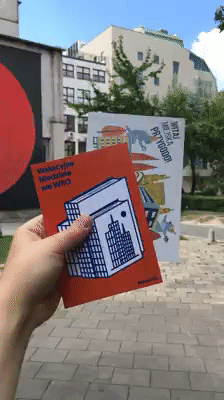
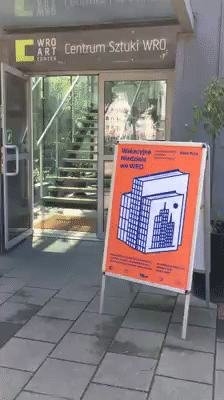
Project "Who saw ... modernism” is realised though walks, workshops, educational and animation activities directed to citizens of Wroclaw, tourists and people interested in modern Wroclaw. “We try to show how to move in the space of the modernist Wrocław, distinguish architectural styles and layer by layer reveal traces of past epochs. With an interactive map, everyone has the opportunity to create their own walking trail along the flagship Modernist buildings in Wroclaw.” The project is coordinated by association PAKT. These GIFs were announcing the promotion of the interactive map at the Wro Art Center
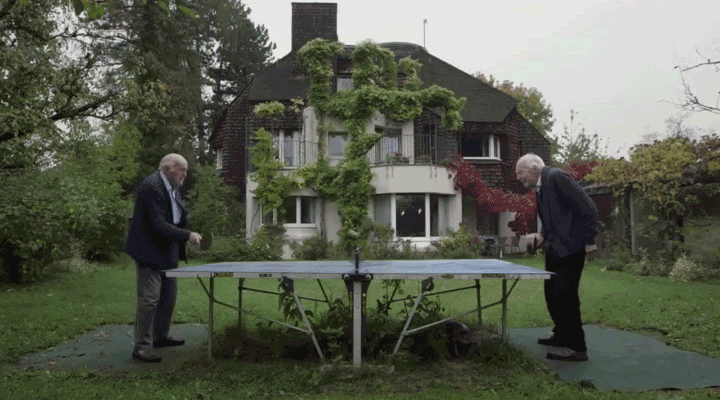
This GIF is short excerpt from the film Concrete Love (directed by Maurizius Staerkle-Drux, Germany, 2014) which follows the daily routine of the 93-year-old brutalist architect Gottfried Böhm and his family. It was used as one of the images within the Uncube magazine’s announcement of the Architecture Film Festival Rotterdam (7-11/10/2015). The festival was initiated in 2000 as one of the first film festivals dedicated to architecture, co-founded by Jord den Hollander and directed by Wies Sanders.

This animated GIF (courtesy of free-daamnn.tumblr.com) was used within the announcement of International Summit on Curatorial Activism and the Politics of Shock organized by Steven Henry Madoff at the Curatorial Practice master’s program at the School of Visual Arts in New York on November 18, 2017
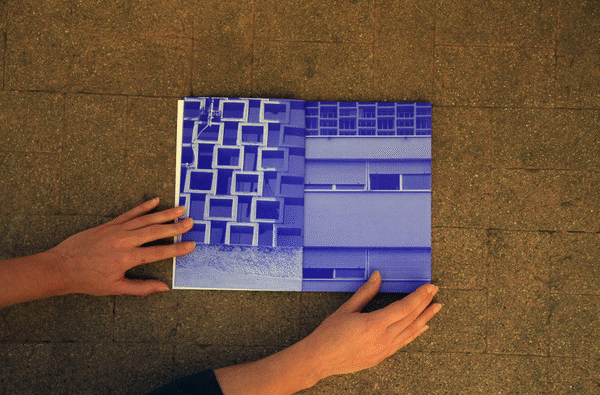
Presentation of the book Ada Felice-Rošić and Nada Šilović - A Woman's Touch in Architectural History of Rijeka by Lidija Butković Mićin, Museum of the City Rijeka, 2014. Graphic design: Marino Krstačić-Furić & Ana Tomić
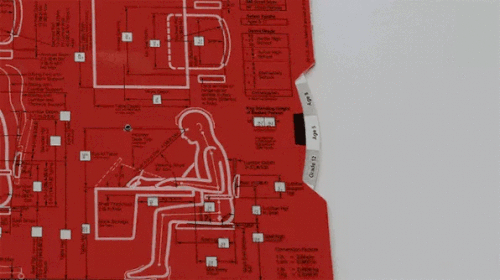

Henry Dreyfussthe Humanscale, published by industrial design pioneer, remains the product designer’s bible. Henry Dreyfuss Associates—the firm known for designing everything from Bell System’s first telephones to John Deere tractors— published in 1960 book The Measure of Man, which contained anthropometric charts labelled “Joe” and “Josephine.” The first set of Humanscale manuals was published in 1974, and sets two and three in 1981. They contain thousands of human factors datasets on human dimensions, seating standards, wheelchair access guidelines, legibility principles, and other essential metrics for designers creating human-centered products and spaces. for that reason, the Humanscale is still the most useful starting point for determining the size, scale, and different dimensions of a product, before prototyping and refining it.
In 2017, Design consultancy IA Collaborative initiated reissue. The entire catalogue contains around 60,000 data points, condensed and displayed in nine plastic, double-sided charts which quickly provide needed information to the user. When rotated, the discs access data like age, height, and ability, corresponding measurements align in cut-out windows throughout the charts.
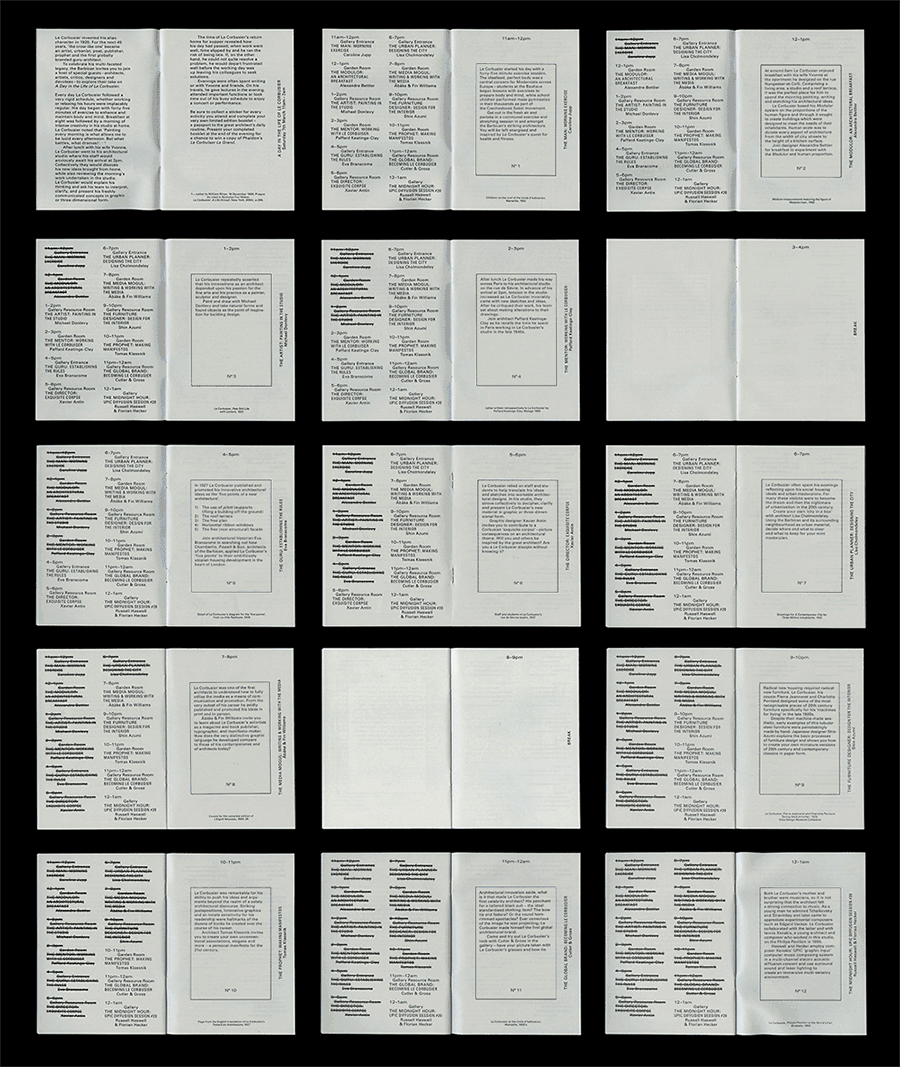
GIF presents the cumulative booklet for ‘A Day in the Life of Le Corbusier’ – a series of events running alongside ‘Le Corbusier, The Art of Architecture’ Curated by Corinna Gardner at Barbican Art Gallery in 2008. “The booklet acts as both a program of events and a sticker book to be completed by visitors. In homage to Le Corbusier’s extreme even totalitarian approach a list of events was repeated on every spread, with each turn of the page one event is crossed off, acting as a check list.” It was designed by OK-RM studio (Oliver Knight & Rory McGrath). Founded in 2008, the studio is a collaborative practice engaged in ongoing partnerships with artists, curators, editors, architects, designers and institutions.
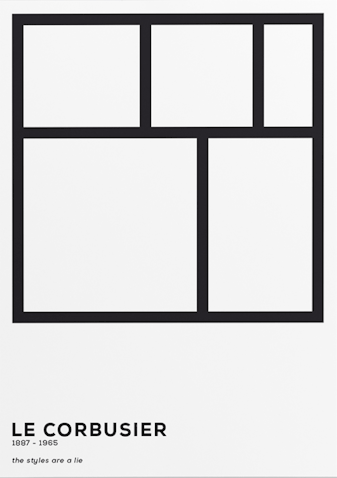
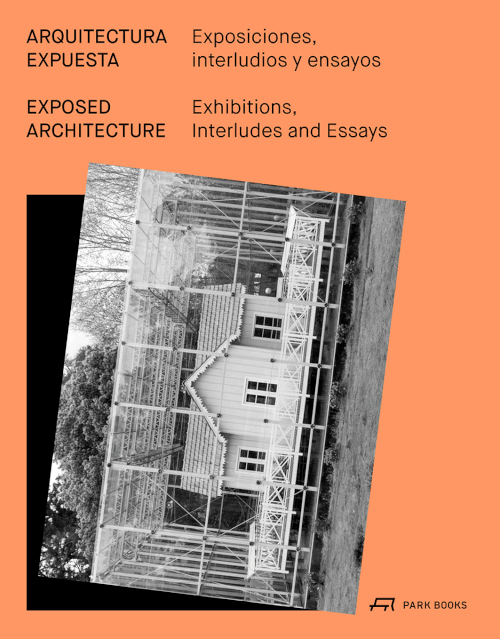
[left] GIF animates book covers of works by Le Corbusier (1887 – 1965), a Swiss-French architect, designer, painter, urban planner, writer, and one of the pioneers of what is now called modern architecture. His buildings were constructed throughout Europe, India, and the Americas. Dedicated to providing better living conditions for the residents of crowded cities, Le Corbusier was influential in urban planning, and was a founding member of the Congrès international d'architecture moderne (CIAM).
[right] LIGA, Space for Architecture, is an independent initiative founded in Mexico City in 2011 that promotes Latin American contemporary architecture through exhibitions, conferences and workshops. It was created as a curatorial platform in order to stimulate the experimentation in relation to the architectural discipline and its possibilities as a discursive practice, expanding and establishing connections with other disciplines. In March 2013 LIGA’s first book was published, including ten exhibitions and unpublished articles on Latin American architectural practice.
LIGA Vol. II Architecture Exposed, edited by Isabel Martínez Abascal and Mario Ballesteros was launched in June 2017. This book puts together information on LIGA activities during the period 2013-2016: Exhibitions 11-22, Undisciplined Interludes and Studio Interludes, containing also 10 critical essays on the theme and exhibiting architecture and a selection of images from the history of exposed architecture that LIGA has published in its social media using the hashtag #exposedarchitecture.
Direction and Curatorship: Carlos Bedoya, Ruth Estévez, Wonne Ickx, Víctor Jaime y Abel Perles; Director of Operations: María Muñoz, Team: Valeria Lapeluz, José Aquilino González y Octavio Vázquez Espinosa

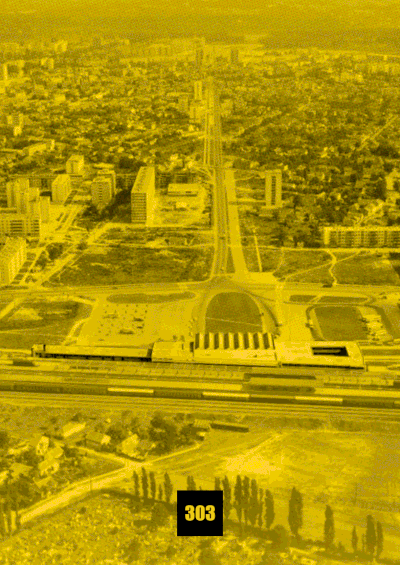
Journal Tristotrojka used this animated GIF within an open call for citizens to write haiku poems during the guided tour "The Place of Meeting" through the Central station in Novi Sad (Serbia) and promotion of the newest issue of the journal on March 30, 2018. The call referred to an event in 2014 when the Station celebrated 50th birthday and when one of the waiting rooms was transformed into a gallery for haiku poems, drawings and photographs. Those were a response to an open call issued by the Vojvodina Railroad Association and Travelling Haiku Association. In this way, Tristotrojka wanted to revive both the station and previous citizens’ initiatives related to its renovation. The haiku poems made during the guided tour in 2018 can be found here. They are all about the building of the Central station.
thanks to Igor Vukičević

In 2013, Museum of Vancouver organised Do It Yourself LEGO Build Day that focused on works by local architect Daniel Evan White. Families, youth, MOV members, architecture students and the community created using LEGO White’s buildings, such as the façade of the Vancouver Art Gallery, 6-foot tall mega skyscraper, Maté House, as well as very precise abstract forms inspired by Daniel Evan White’s architecture floor plans made available at each table. DEW exhibit co-curators Greg Johnson and Martin Lewis selected winning authors, while photographer Ben Cooper took Polaroid photos of kid’s creations. Animated GIF illustrates how images slowly appear in-front of eyes, and was used by PR service of the Museum of Vancouver for the report on the event

Lego creations made during the 2016 Awesome Festival at Western Australian Museum. The GIF from the virtual museum of WAM documents a city made by 4 year old Bourke
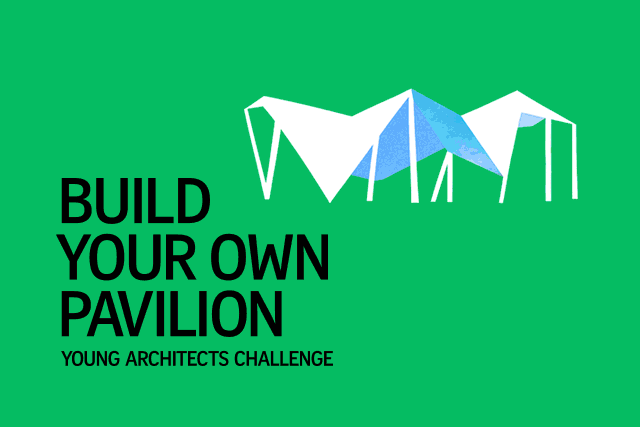
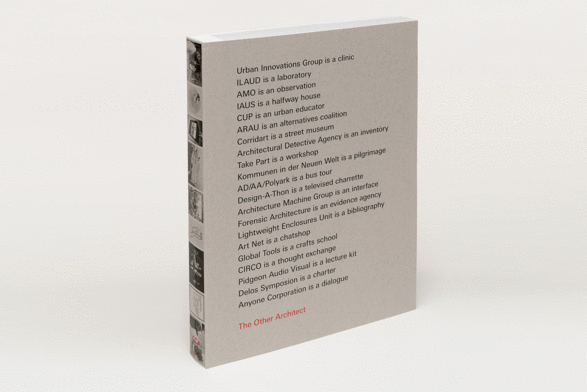
The Other Architect, publication by the Canadian Centre for Architecture and Spector Books, edited by Giovanna Borasi, 2016. “Considering case studies from the 1960s to today, this annotated collection of primary documents presents evidence of experimental venues, methods, and tools that architects have used to research and shape the urgent issues of their time.” It features texts by Florencia Alvarez, Pep Avilés, Greg Barton, Samuel Dodd, Isabelle Doucet, Ole W. Fischer, Anna Foppiano, Kim Förster, Owen Hatherley, Larissa Harris, Alison B. Hirsch, Douglas Moffat, Whitney Moon, Pierluigi Nicolin, Kayoko Ota, Panayiota Pyla, Angela Rui, Deane Simpson, Johanne Sloan, Molly Wright Steenson, Rebecca Taylor, and Mirko Zardini.
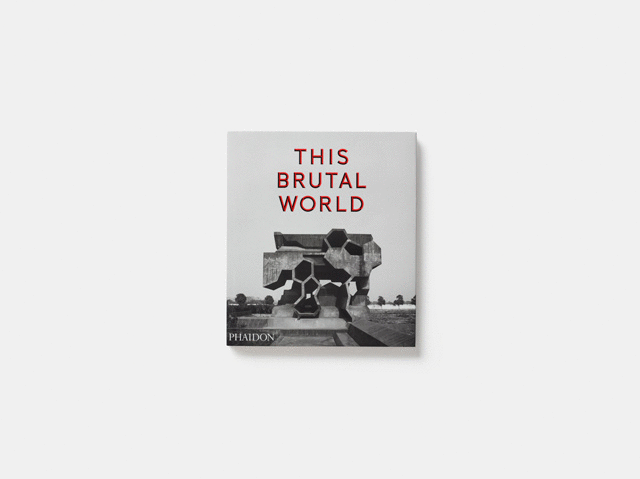
This Brutal World by Peter Chadwick (Phaidon, 2016) is curated collection of some of the most powerful and awe-inspiring Brutalist architecture ever built. It brings to light virtually unknown Brutalist architectural treasures from across the former eastern bloc and other far flung parts of the world.
It includes works by some of the best contemporary architects including Zaha Hadid and David Chipperfield as well as by some of the master architects of the 20th century including Le Corbusier, Mies van der Rohe, Frank Lloyd Wright, Louis Kahn, Paul Rudolph and Marcel Breuer.

[above] Design by Lily Hodgson
[right] Announcement for screening of Wes Andersen’s Grand Budapest Hotel

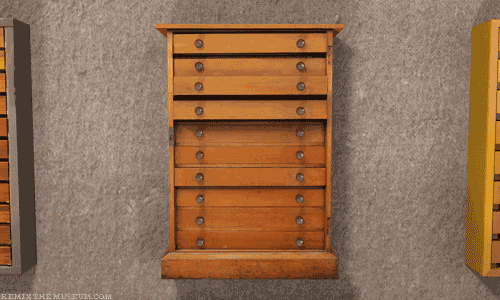
Remix the Museum is a youth program created by Brighton Youth Film Festival in collaboration with animator David Packer. It aims to engage young people with museums. The program consists of animation & gif workshops in relation to the collections and artefacts of the Brighton Museum & Art Gallery, while the resulting films are further shown both in the museum and online. “Collections, heritage, visitor memories, and the secret stories of the building are mashed and mixed up into a display with a difference” which is appealing to younger generations.
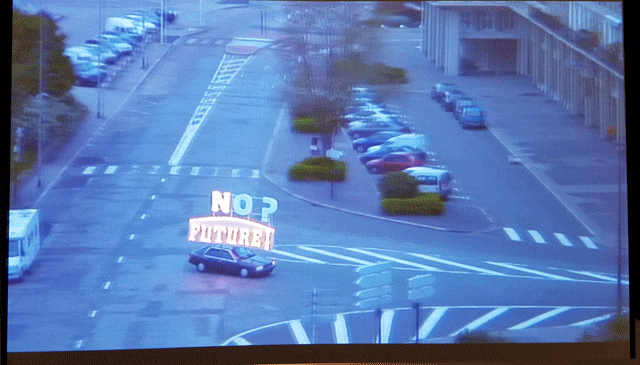
Jordi Colomer’s work “No Future,” 2006
GIF from article “Museum Punk Show in Need of A Sound Guy” by Michael Anthony Farley (published on February 24, 2017) about exhibition “Punk. Sus rastros en el arte contemporáneo” at Museo Universitario del Chopo, curated by David G. Torres, featuring: Tere Recarens, Martin Arnold, Johan Grimonprez, Federico Solmi, Dan Graham, T.R Uthco, Ant Farm, María Pratts, Iztiar Okariz, Chiara Fumai, Raisa Maudit, Fabienne Audéoud, Eduardo Balanza, TRES, Raymond Pettibon, Die Tödliche Doris, Mabel Palacín, Christian Marclay, Guerrilla Girls, Brice Dellsperger, Jordi Colomer, Pepo Salazar, Juan Pérez Agirregoikoa, Jota Izquierdo, Israel Martínez, Aida Ruilova, Antonio Ortega, Luis Felipe Ortega, Daniel Guzmán, Jimmie Durham, Mike Kelley, Tony Oursler, João Louro, Paul McCarthy, João Onofre, Santiago Sierra, Yoshua Okon, Miguel Calderón, Nan Goldin, Enrique Jezik, Guillermo Santamarina, VALIE EXPORT, Kendell Geers, Laureana Toledo, Sarah Minter, Semefo, DR. LAKRA, Gardar Eide Einarsson.
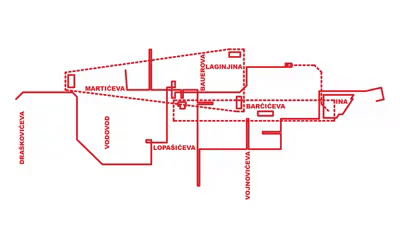
GIF by GMK - Gallery Miroslav Kraljevic, Zagreb, made for the purpose of announcing that the exhibition “Neighbourhood - Docufictional Storyboard” was extended. Published on June 14, 2018
Participating authors: Inesa Antić, Dafne Berc, Nikolina Fužul, Nina Gojić, Lana Harjaček, Ana Jelušić, Ena Jurov, Ana Labudović, Nikolina Rafaj, Dino Belamarić, Lovro Japundžić
Project initiators: Antigentrikacijska redakcija (Dafne Berc, Dino Belamarić, Bojan Mucko)
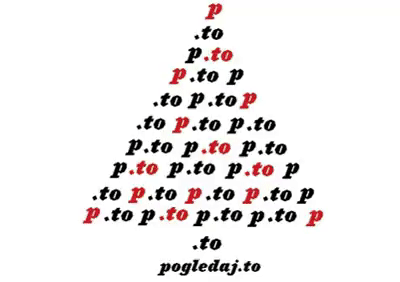

2018 New Year's GIF cards by online magazine for architecture Pogledaj.to [left] and Museum of Contemporary Art Belgrade [right]. While the Pogledaj.to's Christmas tree GIF is based on the magazine's logotype, the MSUB's snowflake GIF (designed by Andrej Dolinka) is based on architecture of the Museum that was also inspiration for its logo. .

Christmas card by Spark Architects

Visual identity for MOAA Architects website, designed by Inhouse. The building-like grid of modular letterforms that make up the MOAA logomark lend themselves to the variable format of the browser. A monolinear highlight is used to carry the MOAA brand throughout the site, helping users to navigate an otherwise prosaic indexical mode of display.

GIF used by the Urban Audiovisual Festival within the open call for video entries for the 3rd Urban Audiovisual Festival, with the theme "City and Night", May 28-30, 2020 [CIES-IUL, ISUP and Nova-FSCH] @ Library of Marvila in Lisbon (Portugal). The call asked “scholars, videomakers, students and video-artist to submit works that approach the night in any of its multiple faces, that portrays what happens at dusk, that gives voice to those who live while we sleep, etc.” in seven different categories: Documentary, Ethnographic Film, Music-video, MobileFilms: films made using cell-phones or tablets, Experimental: audiovisual projects that evidence a new approach to visual methods, Fiction films, Animated films